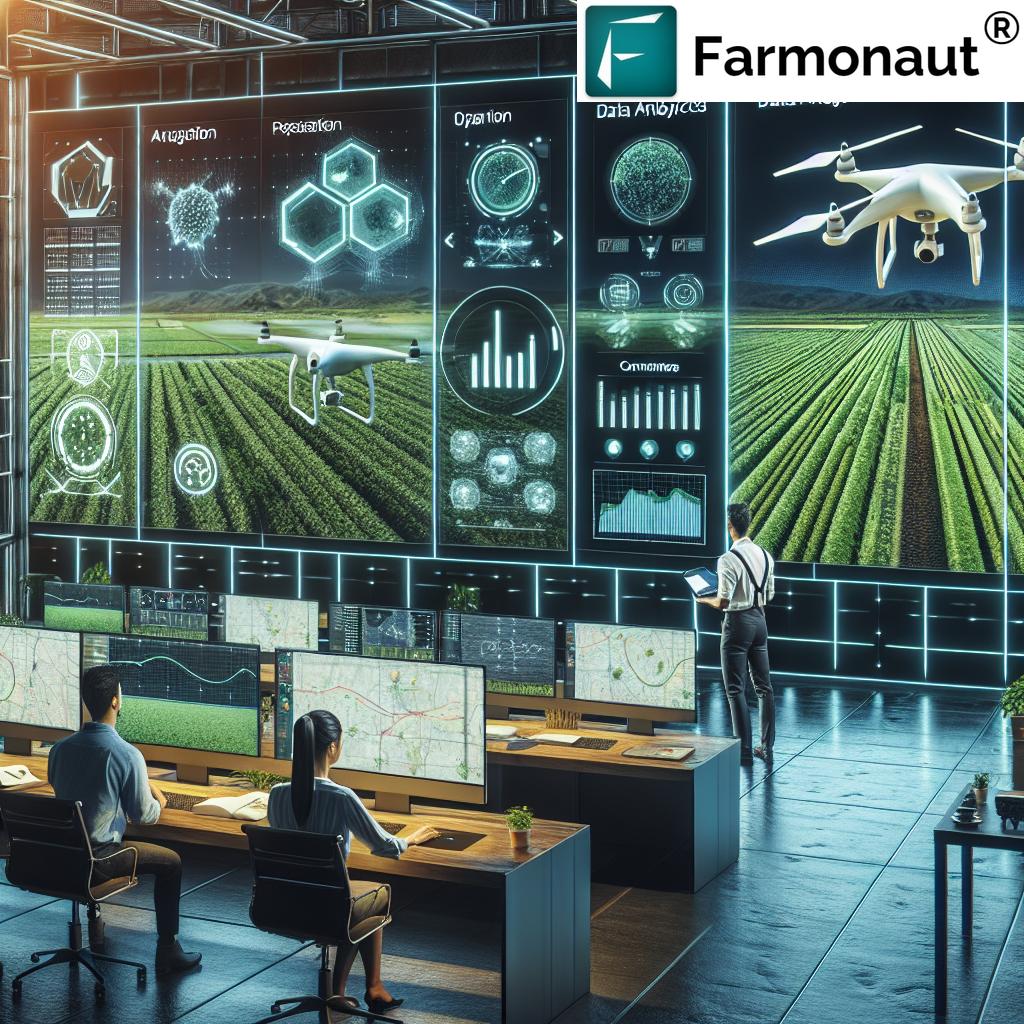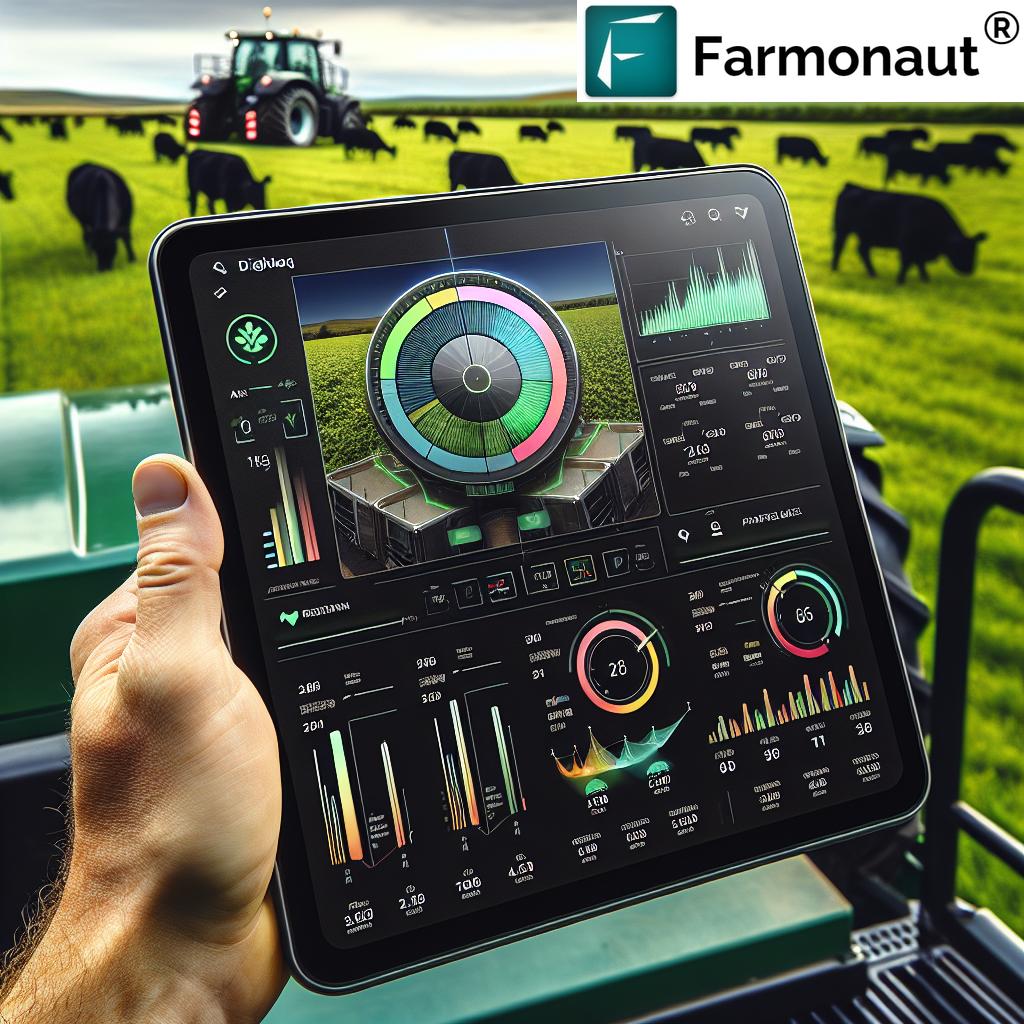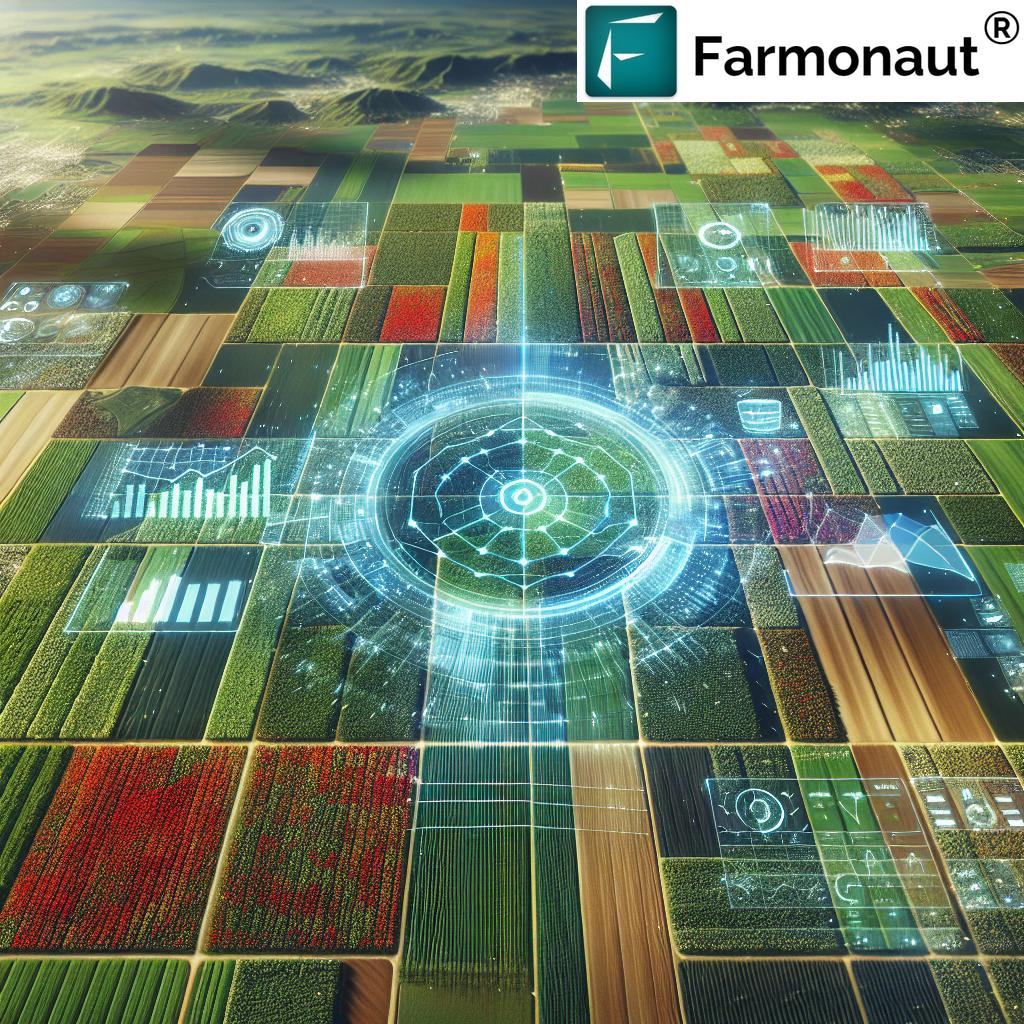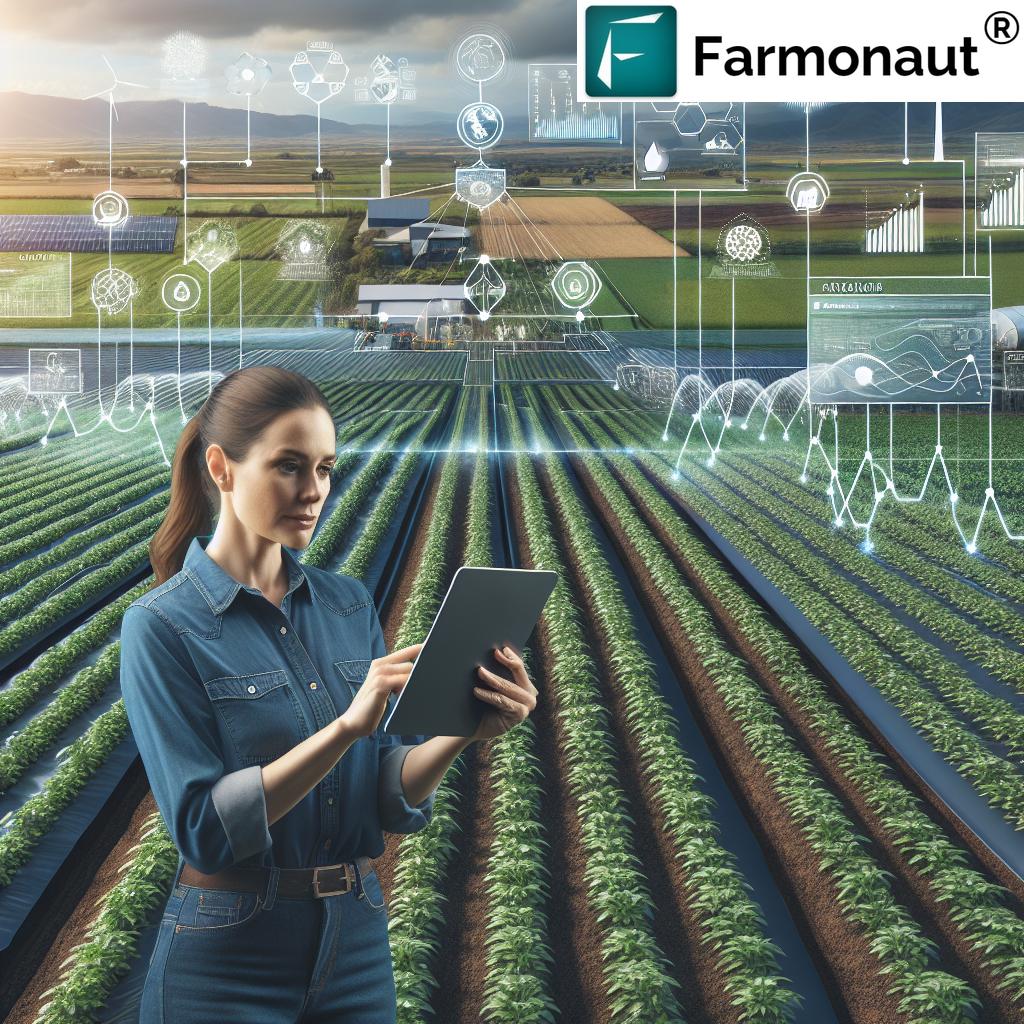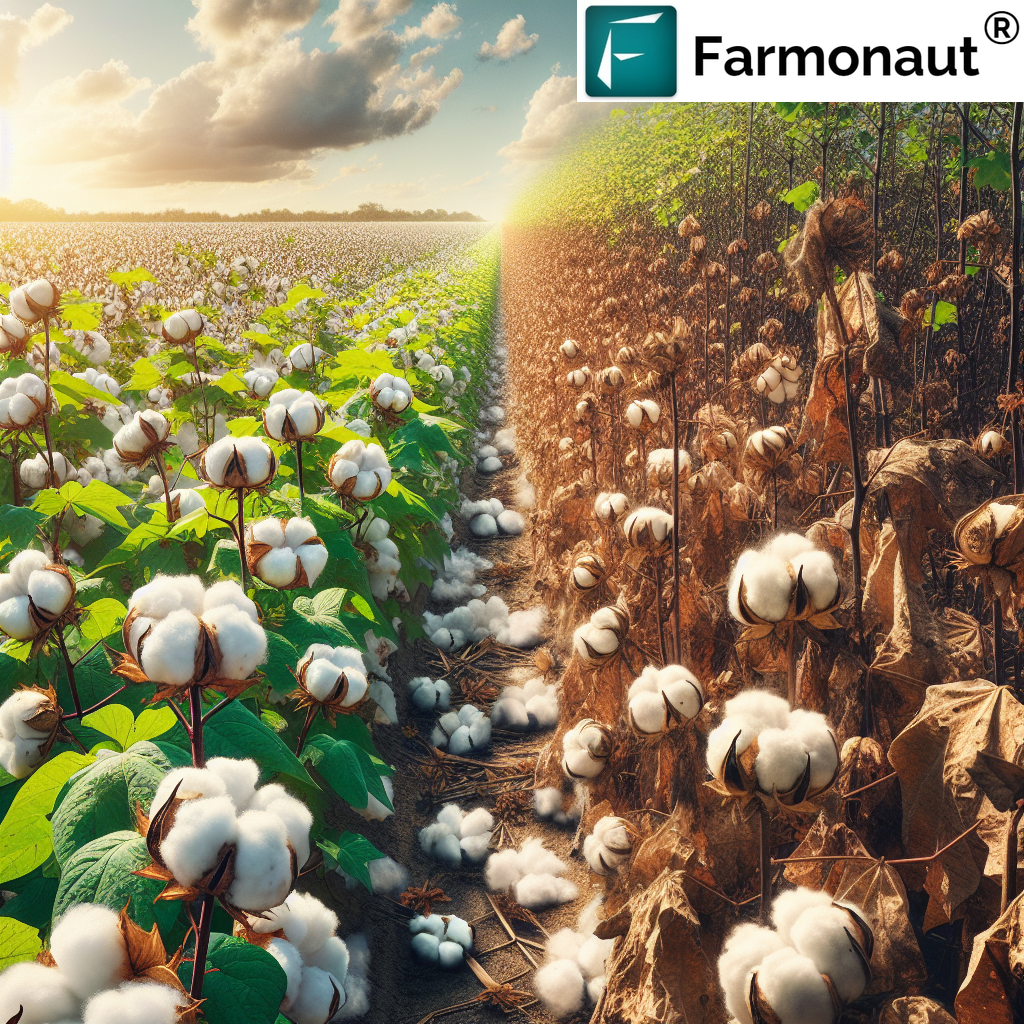Agriculture Spraying Drone: 7 Shocking Benefits Revealed!
“Drones can cover up to 40 acres per hour, revolutionizing large-scale crop management with advanced spraying technology.”
Introduction: Modern Farming and Drone Technology
In the fast-evolving world of modern agriculture, innovations are more crucial than ever in addressing our growing need for food, efficiency, and sustainability. Among the game-changing technologies, agricultural spraying drones stand out as an emblem of how digital transformation and automation are reshaping fields and farms everywhere.
Agricultural spraying drones — advanced unmanned aerial vehicles (UAVs) — are designed to apply pesticides, fertilizers, and crop treatments with extraordinary precision and efficiency. Unlike traditional methods, drone-powered crop spraying targets specific areas, drastically reducing the amount of chemicals used, while also minimizing labor, soil compaction, and operational costs.
At Farmonaut, we believe the integration of drone technology in agriculture is not just a trend, but a necessity shaping the future of sustainable farming. This comprehensive blog reveals the 7 shocking benefits of agricultural spraying drones, explores their technological advancements (like the DJI Agras T30), showcases Farmonaut’s role in precision agriculture, and explains regulatory insights and practical adoption.
Agricultural Spraying Drones: 7 Shocking Benefits Revealed
Let’s dive into the remarkable advantages that agricultural spraying drones bring to crop management and farming:
-
1. Unparalleled Precision and Efficiency
Precision agriculture drones deploy advanced GPS, mapping algorithms, and AI-driven sensors to target treatment down to the square meter. Such precision minimizes chemical drift—ensuring only desired crops or areas are treated while reducing unnecessary usage.
- DJI Agras T30: This prominent model in the industry utilizes a 16-nozzle system, capable of spraying up to 40 acres per hour. It guarantees uniform application and optimal coverage, a feat impossible for manual or tractor-based methods.
- Drones can quickly switch between pesticide, fertilizer, or micronutrient spraying—customizing the application to match real-time crop needs.
-
2. Reduced Crop Damage and Soil Compaction
Ground-based sprayers and tractors often damage crops and compact soil as they move across fields, causing indirect yield losses. In contrast, drones fly above—applying treatments without any physical contact with plants or soil.
- By preserving crop health throughout the season, drone crop spraying contributes to higher yields and increased farm incomes.
- Even in delicate crops like rapeseed, drone application has demonstrated an income increase of up to €119.25 per hectare per season.
-
3. Labor and Cost Savings
Drone operations require fewer operators and consume less fuel compared to bulky, expensive tractors and ground sprayers. This leads to significant cost savings for farmers each season.
- In practical scenarios, drone operations cost as low as €50-100, whereas tractor operations can range from €100-250 for the same area.
- The efficiency of aerial drone spraying translates to less downtime and less reliance on large labor forces—an important factor amid evolving labor markets.
-
4. Environmental Sustainability & Water Conservation
Sustainable farming methods are a crucial goal for the entire agricultural industry. Drones help conserve resources and minimize environmental impact by applying
- Precise amounts of water and chemicals, tailored to the crop, weather, and field conditions.
- A typical drone uses only 10–20 liters of water per hectare, compared to 400–500 liters for conventional ground sprayers—a water savings ratio of about 95%!
By reducing chemical overload, these unmanned aerial vehicles prevent pesticide runoff, protect biodiversity, and foster healthier soil for long-term sustainability.
-
5. Accessibility in Difficult Terrains
Certain landscapes—slopes, flooded fields, or muddy soils—are impossible for tractors or large machinery without causing crop and soil damage. However, agricultural spraying drones navigate these terrains effortlessly, ensuring no crop is left untreated, regardless of natural obstacles.
-
6. Rapid Response and Flexibility
Pest infestations and outbreaks demand timely action. Setting up traditional spraying equipment is cumbersome and time-consuming. Drones, in contrast, can be rapidly deployed for urgent spot treatments, thanks to their lightweight design and programmable flight paths. Our fields can now respond in hours—not days—to changing threats.
-
7. Seamless Integration with Precision Agriculture Platforms
Modern farming technology flourishes when various digital tools connect seamlessly. Agricultural spraying drones are designed for integration with platforms like Farmonaut, enabling real-time monitoring, targeted drone pesticide application, and automated crop management with drones, based on sensor and satellite data.
- Farmonaut’s platform provides AI-based insights for optimal input application, crop health alerts, and historic field data—all helping to further boost drone efficiency and sustainability.
“Precision spraying drones reduce chemical usage by up to 30%, enhancing sustainability in modern agriculture.”
Key Benefits of Agricultural Spraying Drones vs. Traditional Methods
Technological Features of Precision Agriculture Drones
The true power of agricultural spraying drones lies in their impressive technological features.
Let’s explore the components and innovations propelling drone crop spraying into the future:
-
AI and Machine Learning
Drones equipped with AI and machine learning algorithms analyze sensor and camera data in real time. This enables dynamic spray pattern adjustments based on crop condition, pest pressure, and plant density, maximizing effectiveness and reducing the amount of chemicals used.
-
High-Resolution Cameras and Multispectral Sensors
Drones capture detailed high-resolution imagery of the field, detecting early signs of disease, nutrient deficiency, or stress that may not be visible from the ground. These images, especially multispectral, provide actionable insights for precise application and ongoing crop management with drones.
-
GPS and Field Mapping Technology
Advanced GPS enables drones to plan precise flight paths and create field zone maps. This minimizes overspray or untreated gaps and provides uniform coverage across every hectare of the farm.
-
Obstacle Detection & Autonomous Navigation
Modern drones employ obstacle detection sensors (e.g., LIDAR, ultrasonic, infrared), making them safe for operations near trees, power lines, and even in complex terrains. Full autonomous navigation means drones can perform missions with minimal operator intervention, reducing operational risk.
-
Real-Time Data Connectivity
Equipped with data connectivity, drones can communicate with precision agriculture platforms, sending operational data, receiving job files, and adjusting plans as weather changes or new issues arise.
The integration of these advanced technologies underlines why modern farming technology is rapidly evolving—offering unmatched value for drone pesticide application, resource conservation, and sustainable growth.
Farmonaut: Empowering Precision Agriculture with Data
While drone technology in agriculture tackles the operational side of precision input application, Farmonaut is dedicated to providing data-driven farm management and making precision agriculture accessible and affordable for all.
Our platform leverages satellite imagery, AI-powered advisory systems, blockchain-based crop traceability, and carbon footprinting to support smarter decisions—from nutrient planning to logistics management and sustainable farming.
-
Satellite-Based Crop Health Monitoring:
- Analyze crop NDVI, soil moisture, and high-resolution field images—uncovering stress and growth patterns not visible to the eye.
- Enables proactive pest and disease management, aligning perfectly with drone crop spraying missions.
-
Jeevn AI Advisory System:
- Receive real-time alerts, weather forecasts, and tailored input advice—helping you utilize drone spraying and other tech efficiently.
-
Blockchain-Based Product Traceability:
- Ensure safe and verified supply chains from farm to consumer—ideal for food safety and traceability compliance.
-
Fleet and Resource Management:
- Streamline your drone fleet and machinery usage—cut costs, ensure safety, and maximize fleet management ROI.
-
Carbon Footprinting and Sustainability:
- Monitor your carbon footprint in real-time and make informed steps toward sustainable farming methods and compliance.
-
Crop Loan & Insurance Verification:
- Leverage satellite data for crop loan and insurance verification—supporting easier access to agri-finance and lower fraud.
Farmonaut’s mission is to empower farmers, agribusinesses, and institutions with actionable insights for better yields, quality, and profitability—all without manufacturing drones or farm equipment.
To learn more about our large scale farm management solutions and personalized satellite advisory, click here.
For developers looking to integrate advanced field and weather data with their own drone systems or applications, Farmonaut’s API and Developer Documentation offer robust, scalable access.
With Farmonaut, the integration of agricultural spraying drones with a transparent, data-driven strategy is just a tap or click away.
Agricultural Drone Regulations: What You Need to Know
The deployment of drone technology in agriculture is subject to regulatory frameworks worldwide to ensure safety and compliance. Here’s a concise overview to help guide your drone crop spraying operations:
-
FAA Certification (United States):
- Drone operators must obtain a Remote Pilot Certificate under FAA Part 107.
- For drone pesticide application, an exemption under FAA Part 137 may also be required.
-
State-Specific Regulations:
- Some states, such as Ohio, have additional licensing requirements and operational guidelines for chemical application via drones.
-
General Good Practices:
- Always register your drone, keep records of operations, ensure software updates, and maintain regular calibration of sensors.
Remain vigilant of evolving regulatory requirements and consult official agencies for latest updates before scaling your operations. (Reference: Ohio State Extension Factsheet)
Challenges and Limitations of Spraying Drones
Although the advances in agricultural spraying drones are remarkable, our journey toward complete adoption is not without challenges:
-
Battery Life and Payload Capacity:
- Drones face operational time restrictions due to limited battery life. Similarly, their payload capacity limits the quantity of chemicals or water carried in a single flight.
- Ongoing technological advancements continue to extend battery performance and increase payload.
-
Regulatory Hurdles:
- Navigating complex agricultural drone regulations—especially regarding flight permissions and pesticide application—can sometimes delay large-scale adoption.
-
Technical Issues:
- Like any digital technology, drones may experience signal loss, forced landings, or require maintenance and technical support.
-
Cost of Initial Acquisition:
- Premium drone models (e.g., DJI Agras T30) require upfront investment, but pay off in efficiency, yield, and sustainability over operational years.
These limitations are being steadily addressed by manufacturers, software providers, and regulatory bodies, paving the way for next-level adoption in crop management with drones.
The Future of Drone Technology in Agriculture
The next decade holds staggering promise for drone crop spraying and precision agriculture drones. Here’s what we can expect:
-
Exponentially Growing Adoption
- Countries like Japan have seen the number of hectares sprayed by drones increase 45-fold within two years, with similar surges across Asia, Europe, and the Americas.
-
Technology Advancements
- We anticipate longer-range battery life, increased payload capacity, and further enhancement of autonomous navigation.
- Innovations such as swarm drone spraying and machine vision for real-time weed/disease targeting are on the horizon.
-
Greater Data Integration
- Integration with soil sensors, weather stations, and satellite-based platforms” will fine-tune every input applied.
- Blockchain technology and traceability are expected to streamline compliance and market access.
With companies like Farmonaut providing the backbone of data infrastructure, the future of agricultural spraying drones promises efficiency, traceability, and sustainable productivity—making farming fit for a climate-conscious, data-driven world.
Frequently Asked Questions: Agricultural Spraying Drones
What exactly are agricultural spraying drones used for?
Agricultural spraying drones are unmanned aerial vehicles (UAVs) designed to apply pesticides, fertilizers, micronutrients, and other crop treatments with exceptional precision. They are primarily used for targeted crop protection, resource conservation, and rapid response to pest or disease outbreaks.
How do spraying drones improve efficiency compared to traditional methods?
Spraying drones dramatically reduce spraying time, minimize the amount of chemicals and water used, and require fewer labor hours. With automated GPS-guided paths and advanced spraying systems, drones can treat up to 40 acres per hour—significantly outpacing manual or tractor-based approaches.
Are spraying drones environmentally friendly?
Yes. By targeting specific areas and adjusting spray rates, drones minimize chemical drift, reduce input waste, and can decrease water usage by up to 95% per hectare, thus promoting sustainable farming and reducing environmental impact.
Do operators need special permits for drone pesticide application?
Yes. In most regions (such as the U.S.), commercial drone operators require FAA Part 107 certification, and those applying chemicals often need a Part 137 exemption and relevant state licenses. Regulations vary by country and state.
How do agricultural drones integrate with platforms like Farmonaut?
Farmonaut’s platform delivers real-time satellite data and AI-driven recommendations, which can be used to plan and validate drone spraying missions. This integration ensures input application is not only precise, but also timely and data-driven, maximizing yield and minimizing waste.
What are the main limitations of spraying drones today?
Current limitations include battery life (impacting operational time), payload capacity, the need for skilled operators, and complex regulatory requirements. Ongoing advancements are steadily overcoming these barriers.
How can I try Farmonaut’s satellite-based crop monitoring?
You can access Farmonaut via our web and mobile apps, or through our developer API for integration with your own farm management or drone systems.
Farmonaut Subscription Options & Access
Farmonaut offers flexible subscription packages tailored for individual farmers, enterprises, and government bodies. Choose from web, Android, or iOS app access, or leverage robust API integrations for large-scale or custom requirements.
Conclusion
Agricultural spraying drones have revolutionized modern farming by enhancing efficiency, precision, and sustainability in crop management. Through advanced GPS, AI, sensors, and integration with satellite data platforms like Farmonaut, these drones are setting the new gold standard in the sustainable and profitable management of farm resources.
With 7 key benefits that far outstrip traditional sprayers—ranging from reduced chemical use to higher yields and drastic water savings—it’s clear that drone crop spraying and precision agriculture drones are at the heart of the next agricultural revolution.
Whether you are a smallholder farmer, agribusiness, or policymaker, embracing data-driven and technology-enhanced farming is no longer optional—it’s a strategic necessity for food security, economic growth, and environmental stewardship.
The path forward lies in the seamless integration of data intelligence, advanced technology, and innovative tools. Farmonaut continues to lead the way by making precision agriculture affordable, accessible, and actionable for everyone.


